Palazzo Colonna was built between 1650 and 1700 to house the Colonna family’s art collection. It’s a Baroque masterpiece stuffed full of art and frescos.
You’ve likely never heard of Palazzo Colonna. But if you’d like to have an aristocratic private palace all to yourself in Rome (who wouldn’t?), this is the place.
The noble Colonna family still resides there after eight generations. And their fancy digs will likely leave you speechless. It was a palace meant to impress.
You might walk right by the staid facade without noticing it. In Rome, you never know from the outside what you’ll find on the inside.
Palazzo Colonna is in the heart of Rome right near Piazza Venezia at the top of the Roman Forum, opposite the Colosseum. You leave the hurly burly of central Rome and disappear into a quiet sanctuary of Renaissance-Baroque splendor.
Here’s my guide to visiting the beautiful art-filled Palazzo Colonna in Rome Italy. I give you an overview of the palace’s history and tell you everything to see inside.
There are 4 parts to visit:
- Great Hall
- galleries
- garden
- Princess Isabell apartments
Palazzo Colonna & the Colonna Family
Palazzo Colonna is one of the oldest palaces in Rome. It’s also the largest private palace in Rome.
During construction and subsequent improvements, the Colonna family let the money flow. The resulting effect is a beautiful and lavish assemblage of Medieval, Renaissance, Baroque, and Roman Rococo art and architecture.
To top it off, it’s done in unfailing good taste and beautiful preserved, with the family’s personal objects still in place.
It all began in the 13th century. A count from outside Rome (the nearby town of Colonna) settled on Quirinal Hill. He built the palace on the site of a roman temple.
The fortunes of the Colonna family prospered, through arranged marriages, trade, politics, and ties to the church. The Colonna became powerful politicians and military leaders, not just socialites.
The Colonna family included Pope Martin V and over a dozen cardinals. Martin V presided over the end of the “schism” in the catholic church, when the papal seat finally returned to Rome from Avignon.
Martin V made Palazzo Colonna a papal seat. From there, he plotted the revival of Rome and survived the sack of Rome by Holy Emperor Charles V.
One Colonna family member, Maria Mancini Mazzarino, was a feisty favorite of Louis XIV of France. Rumor holds that she was perhaps a paramour of the Sun King. At one point, disguised as a man, she ran off to France.
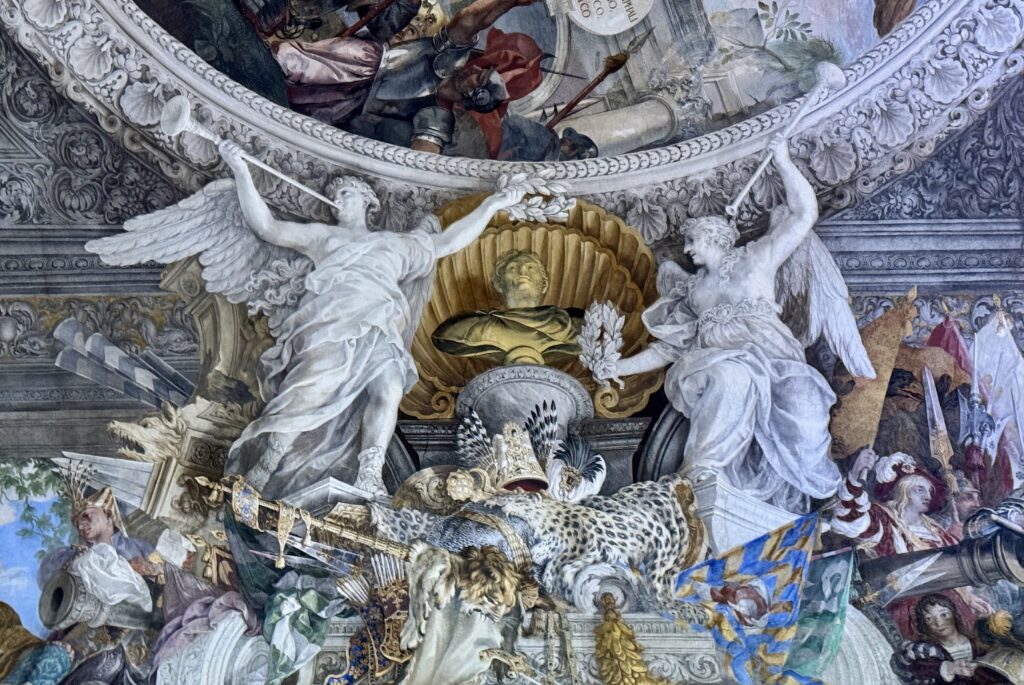
The great Baroque sculptor Bernini was a frequent guest at Palazzo Colonna. His more incorrigible rival, Caravaggio, hid in the palace, after killing a man in Rome. The Colonna family helped him escape to Naples.
The poetess Vittoria Colonna was an intimate friend and muse of Michaelangelo. They often met together at the palace.
The pair exchanged letters and sonnets for many years. So close was their friendship that Michelangelo painted Vittoria into his famous The Last Judgment fresco in the Sistine Chapel.
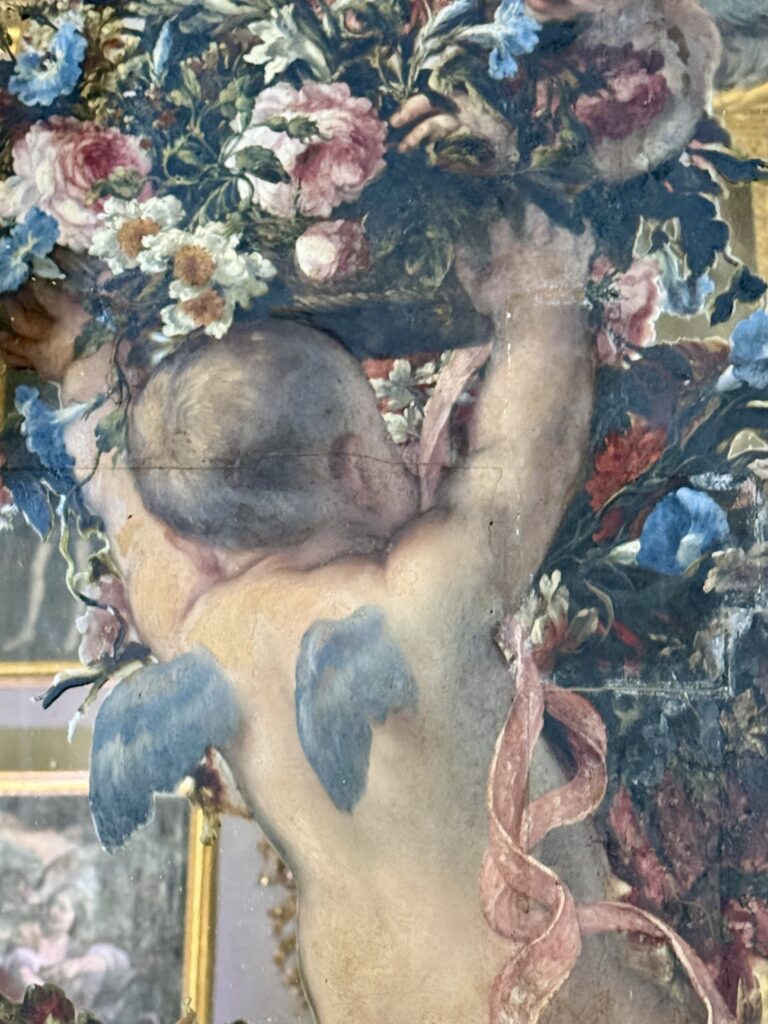
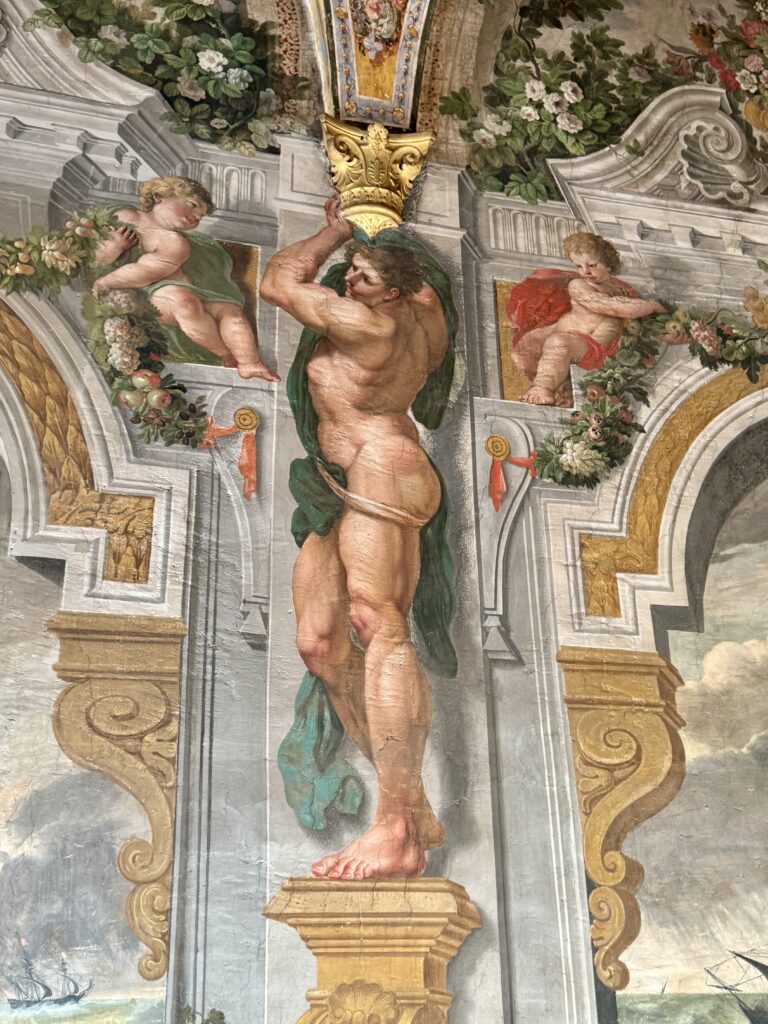
Throughout the palace, you’ll find the decorative motif of the Colonna family — a single column topped with a crown — in almost every room. You can’t forget for a single moment that this is Colonna territory.
Guide To Palazzo Colonna: What To See
1. Palazzo Colonna Interiors
If you like the over-the-top ethos of the Baroque period, you’ll conclude that the Palazzo Colonna is one of the dreamiest palazzos in existence. The word “breathtaking” comes to mind.
Aside from all the gilding, this Baroque jewel has many wonders to explore — a terrific art collection, stunning frescoed ceilings and walls, the private apartments of Princess Isabelle, and the Pio Pavilion.
The walls of the entire residence are covered with Old Master artworks by Pinturicchio, Carracci, Guido Reni, Tintoretto, Salvator Rosa, Bronzino, Guercino, Veronese, Vanvitelli, and many others.
As you walk through the family’s rooms, you can admire multi-colored marble floors, authentic period furniture, lavish tapestries, and intricate crystal chandeliers.
The more intimate living spaces connect to an outdoor arcade. Beautiful frescos and tromp l’ceil paintings connect the interior and exterior spaces.
2. Great Hall & Art Collection
The Colonna Gallery has a lovely collection of in situ art. Almost every inch of the walls is covered in artworks, piled one of top of the other. All the ceiling are decorated.
The gallery was originally conceived as a huge state room. It was intended to celebrate the victory of the Christian fleet over the Turks at the Battle of Lepanto in 1571.
The commander of the papal fleet — family scion and warrior Marcantonio II Colonna — is depicted on the vault of the Great Hall and the Hall of the Battle Column.
Commissioned in the 17th century by Cardinal Girolamo I and his nephew Lorenzo Onofrio Colonna, the gallery was inaugurated 100 years later by Filippo II. The original architect was Antonio del Grande.
At the end of the 17th century, he was given an assist by such luminaries as Gian Lorenzo Bernini, Johan Paul Schor, and Carlo Fontana.
While there are many rooms, the four main highlights of the Colonna Gallery are: The Great Hall, The Blue Room, The Hall of the Battle Column, and The Hall of the Landscapes.
The most magnificent room is the Great Hall. It’s a Versailles-like gem, akin to the famous Hall of Mirrors but even longer.
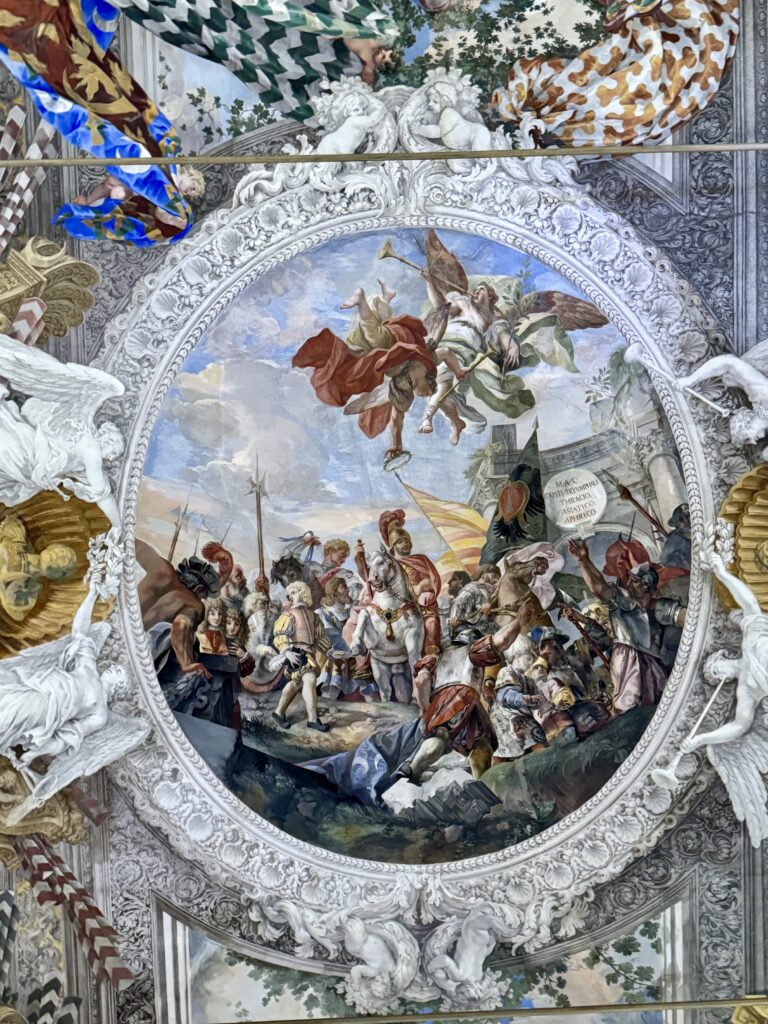
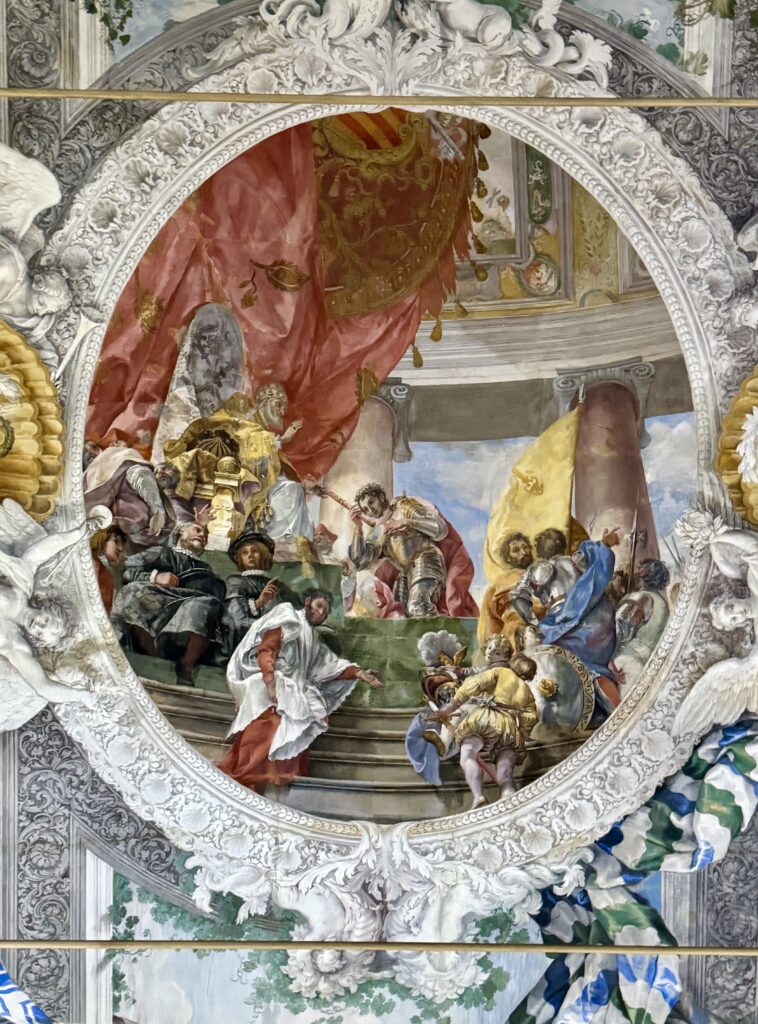
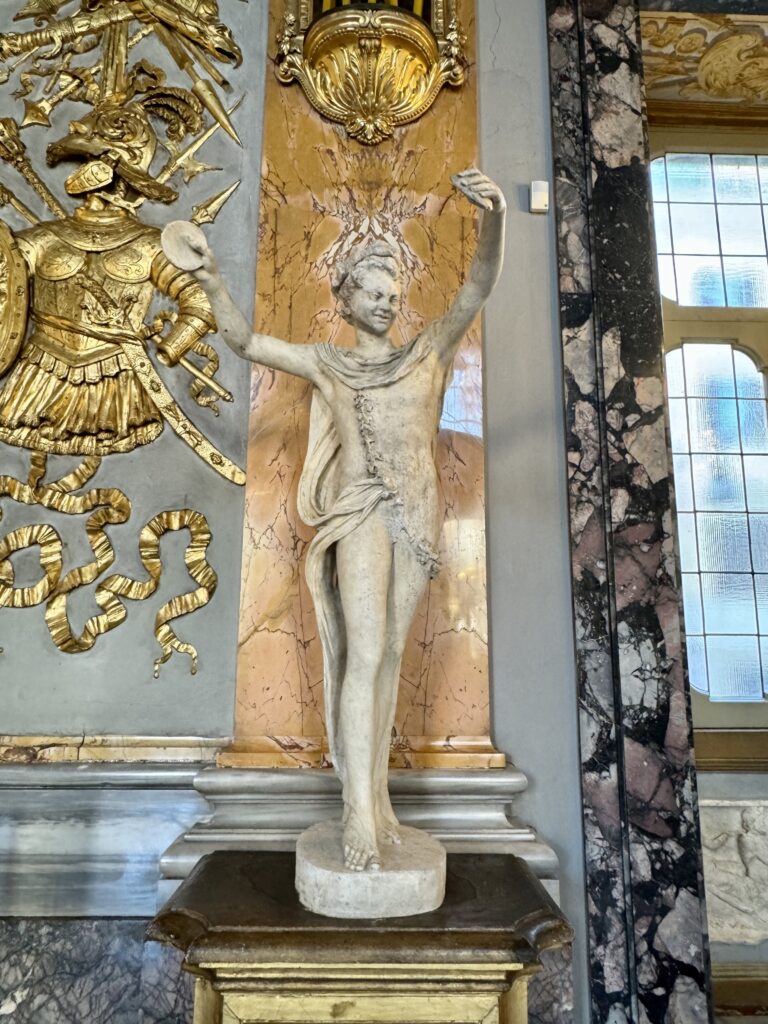
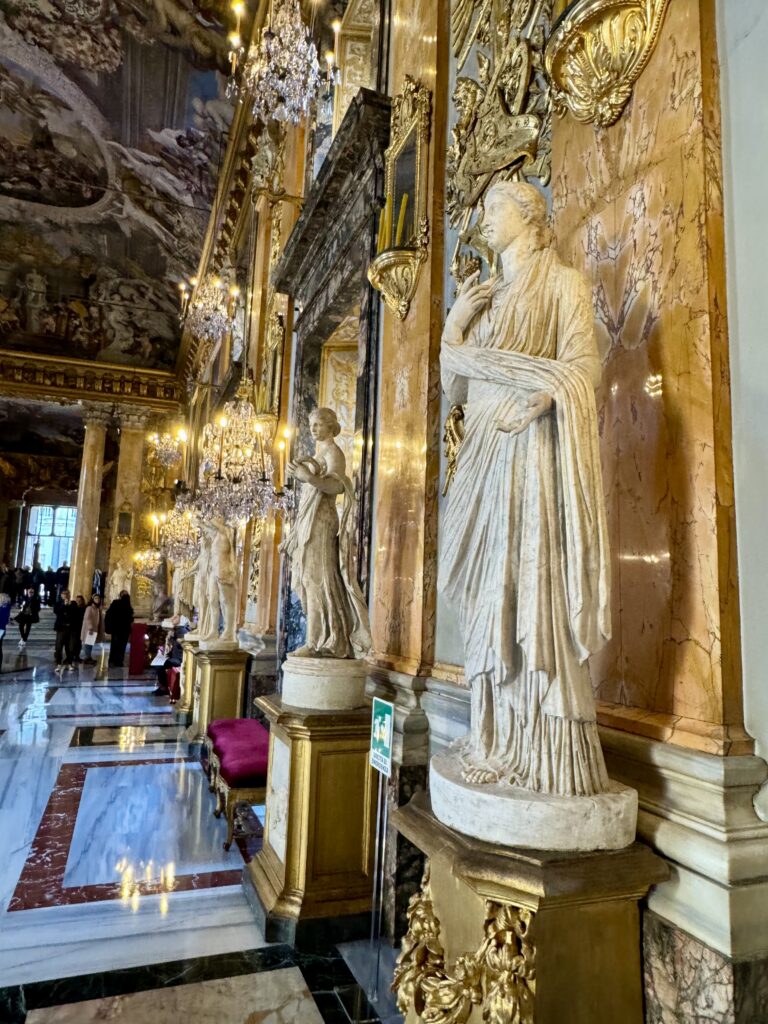
It stuns with sculptures, mirrors, and 270 paintings set in golden frames. The ceiling fresco depicts The Battle of Leptano.
Over the doors, carved and gilded military standards explode out of the over-scaled marble moldings. A double row of Murano chandeliers hangs in front of the windows along both sides of the gallery.
Between the windows, Mario de Fiori painted enormous mirrors with vases of flowers and frolicking cherubs. These are stunning! Beneath them, marble table tops are supported by writhing Ottoman slaves.
The Great Hall has two separate anterooms, marked off from the main space by two columns.
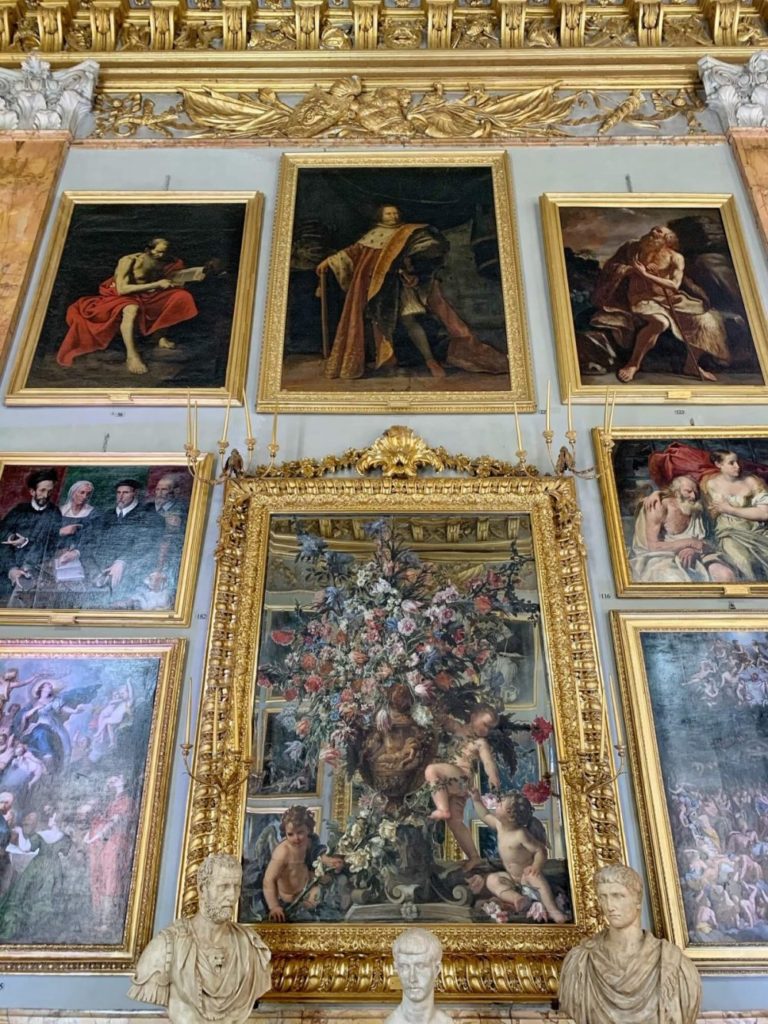
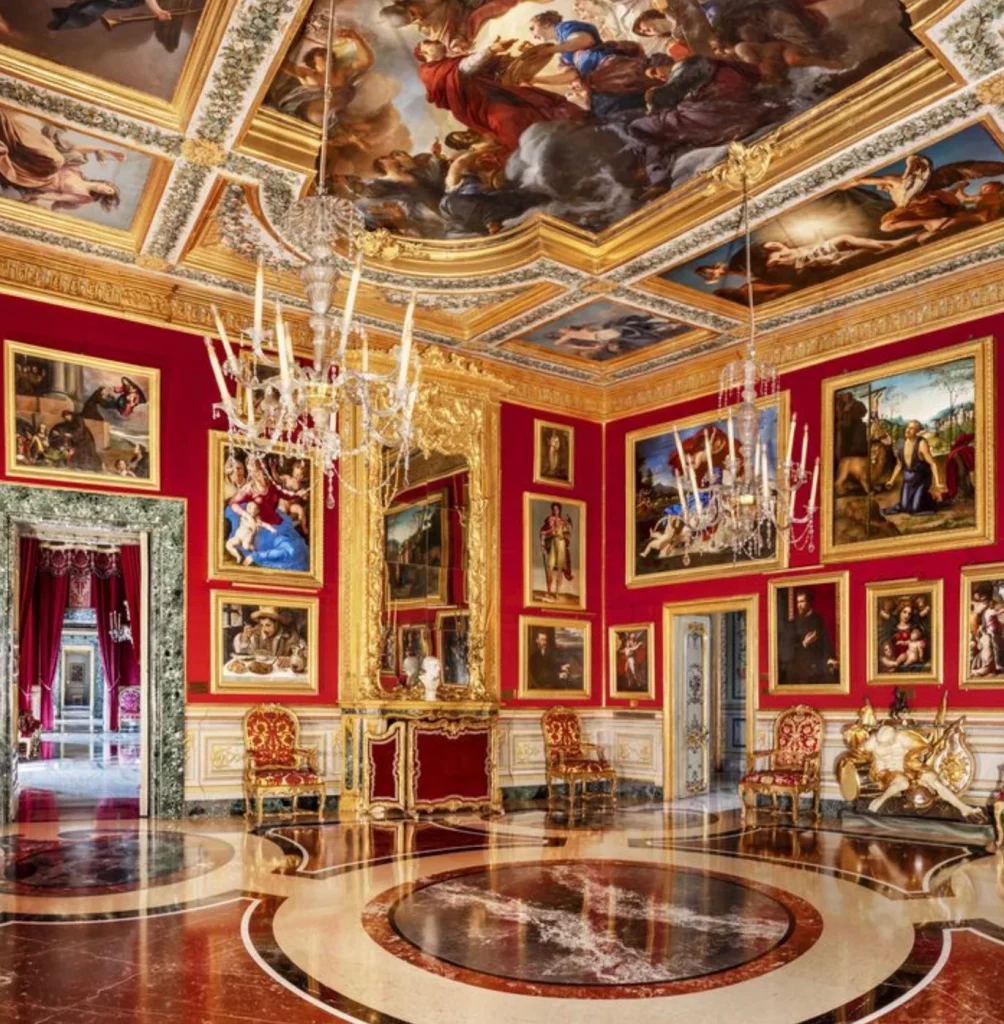
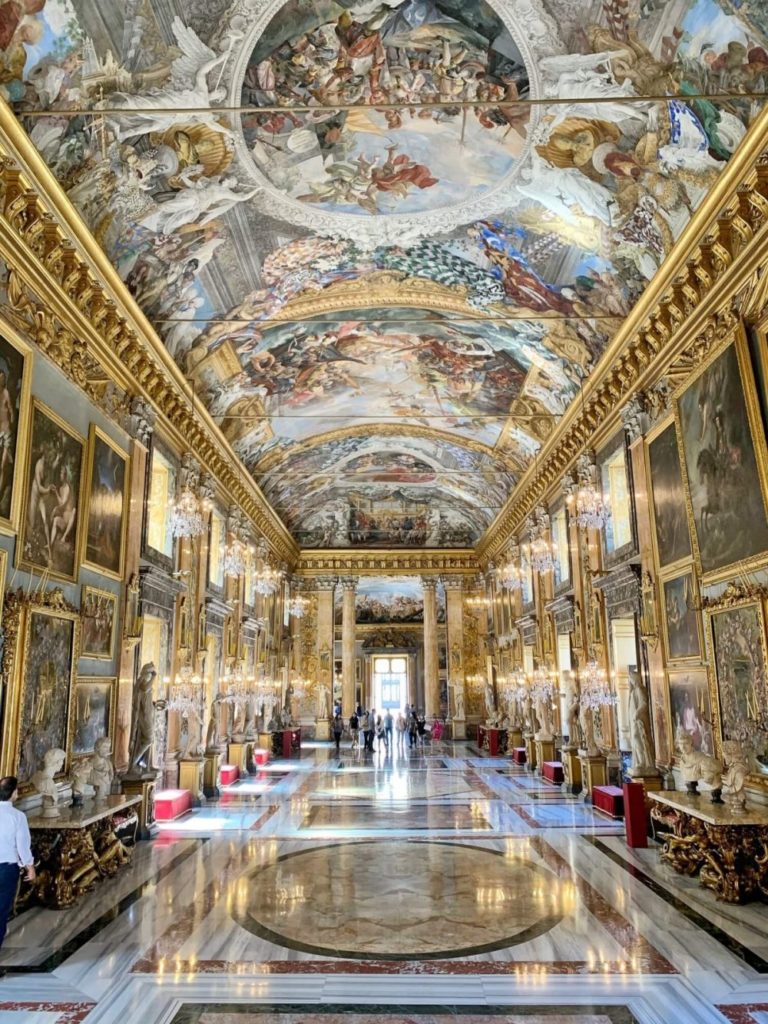
The west anteroom was painted by Sebastiano Ricci in 1693-95 with the magnificent Allegory of Marcantonio Colonna’s Victory at Lepanto. In the east anteroom, Giuseppe Chiari painted The Apotheosis of Marcantonio Colonna in 1698-1700.
The Great Hall was used as a filming location for the movie Roman Holiday. It also has an actual cannonball lodged in its marble stair, which is a relic of the 1849 siege of Rome.
The most priceless pieces of the Colonna collection are paintings by Bruegel (older and younger), Tintoretto, Andra del Sarto, and Paolo Veronese.
The Colonna’s most famous painting is Annibale Carracci’s remarkable The Bean Eater. There are also several good Bronzino works, including his sensual Venus, Cupid, and a Satyr, in the Hall of the Battle Column.
3. Apartments of Princess Isabelle
Isabelle Colonna was born in Sursock, from a wealthy family of Byzantine origin. She fell in love with Prince Marcantonio, who brought her to Italy where she became an aristocratic socialite.
After the fall of the monarchy, Isabelle became a sort of “substitute queen,” a player in the informal politics of Rome. Clad in whopping cabochon emeralds, she was the 20th century protector of Colonna Palace.
She saved it during WWII, and was largely responsible for opening it to the public. She died in 1984 at age 96.
The Princess Isabelle Apartments are in a 15th century wing of the palace. There, she received many royals, including Queen Elizabeth.
The beautiful apartments have a theatrical and almost Venetian-like vibe, they’re so extravagant. The furnishings and arrangements are exactly as they appeared when the Princess died in 1984.
This is where you’ll find a collection of small paintings on copper by Jan Breughel the Elder. The delicate frescos (some by Pinturicchio) depict the pastoral countryside. You can almost hear the birds chirping.
The Hall of the Fountainis literally the stuff of legend. The ceiling is decorated with elaborate Renaissance frescoes featuring Greek and Roman heroes.
Near the wall rests a surviving panel of a scattered Renaissance altarpiece. The fountain itself is a 15th century marble basin mounted on an ancient frieze-covered base.
4. Pio Pavilion
The Pio Pavilion is dedicated to Princess Donna Sveva Colonna.
Highlights are the Cornucopia Room, the Room of the Baldachin, the Galleriola, and the Room of the Majolica. The tapestry collection depicts moments in the life of Alexander the Great.
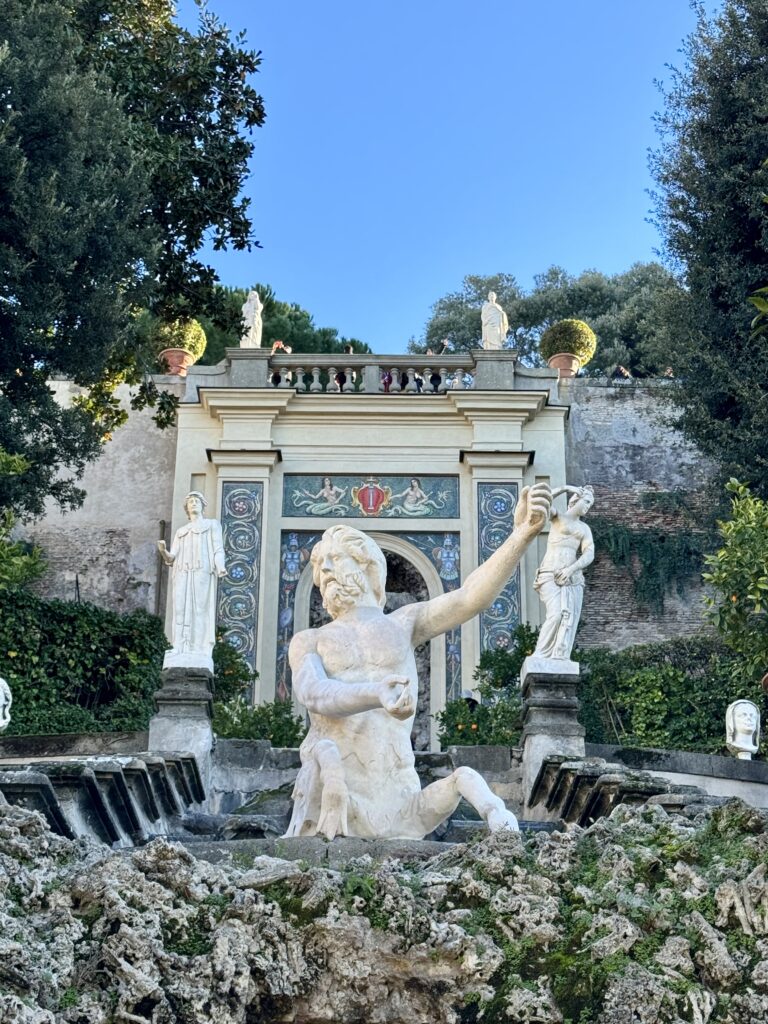
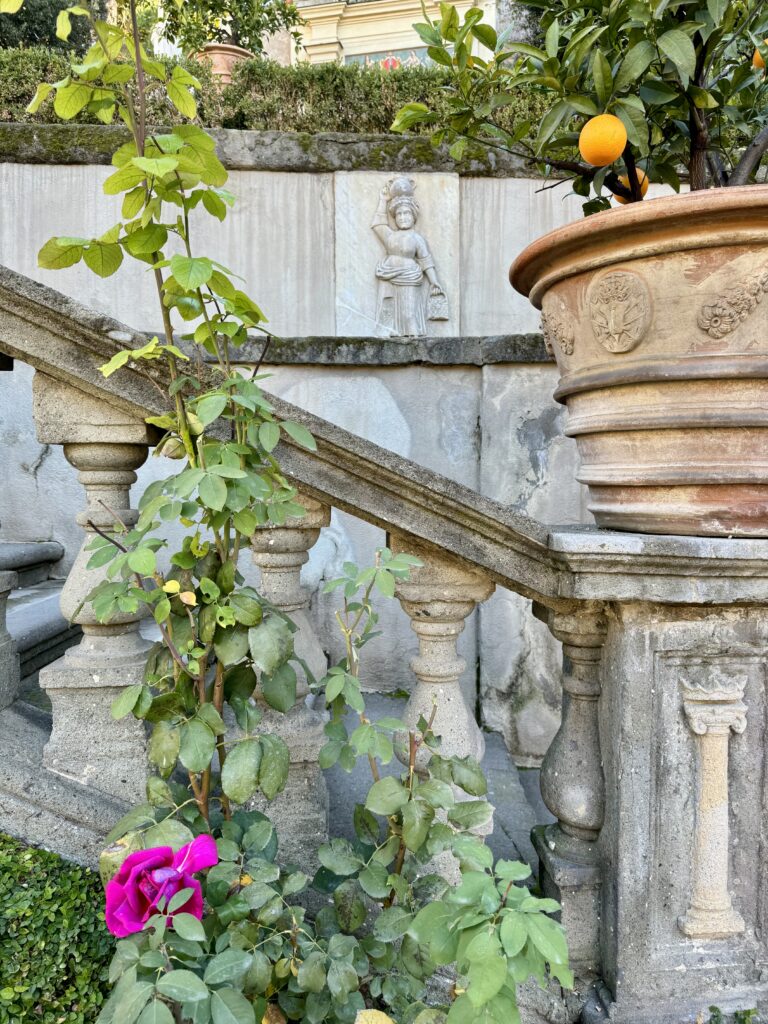
5. Palazzo Colonna Gardens
I’ve visited twice in winter, so there wasn’t too much in bloom. Still, the gardens are beautifully laid out over several terraced areas.
Major enhancements were made between the 16th and 17th centuries, including bridges and a nymphaeum adorned with ancient statues, citrus vases, and sculptures.
There’s a large grotto-like fountain with mosaics. You’ll also have a beautiful views of Rome, including the Altar of the Fatherland monument.
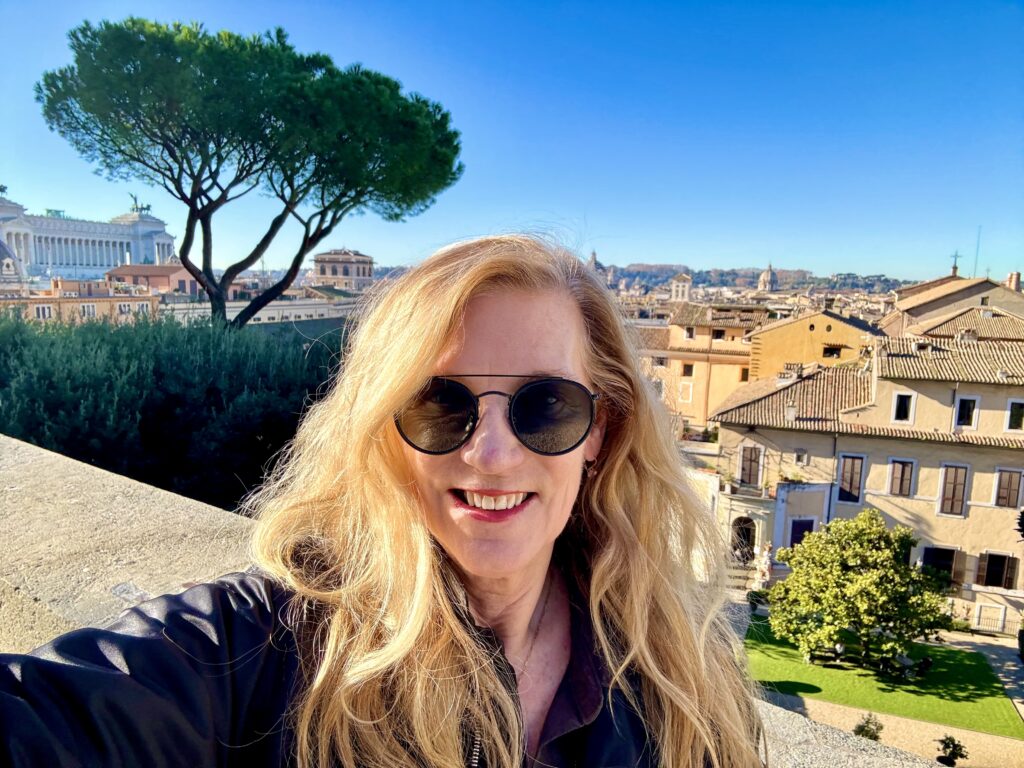
Practical Guide & Tips For Visiting the Palazzo Colonna:
Hours: The palace is only open on Saturday morning from 9:00 am to 1:15 pm (last entry). There’s a guided tour at noon.
Address: Entrance on Via della Pilotta, 17
Tickets & Prices: The gallery and gardens are 15 euros. If you want to see the Princess Isabelle apartments, the price is 25 euros.
Pro Tips:
The paintings are not labeled. But there is a booklet you can carry around with the paintings listed by number. This isn’t the easiest way to identify the artworks. Some you will likely recognize anyway.
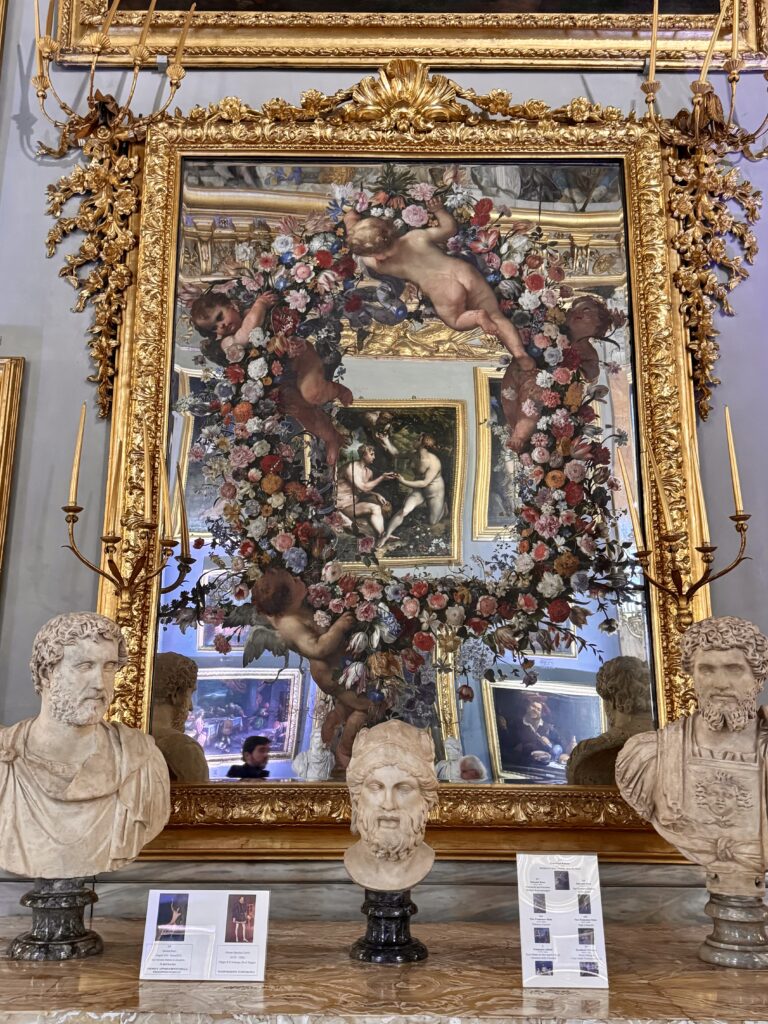
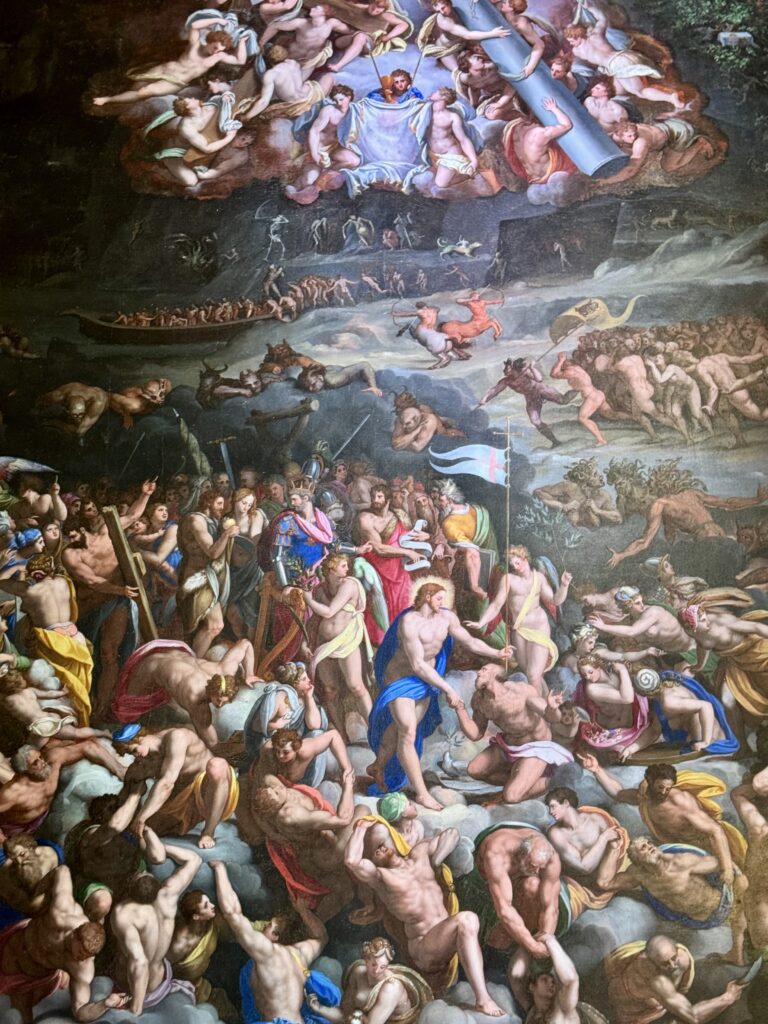
The best way to proceed on your visit is by visiting the gardens first and then starting in the Great Hall.
I hope you’ve enjoyed my guide to Palazzo Colonna. You may enjoy these other Rome travel guides and resources:
- 8 ways to spend 1 day in Rome
- 3 day itinerary for Rome
- 4 day itinerary for Rome
- 5 day itinerary for Rome
- Best museums in Rome
- Hidden gems in Rome
- Archaeological sites in Rome
- Guide to the Borghese Gallery
- Guide to Palatine Hill
- Guide to the Roman Forum
- Guide to the Colosseum
If you’d like to visit the Palazzo Colonna in Rome, pin it for later.

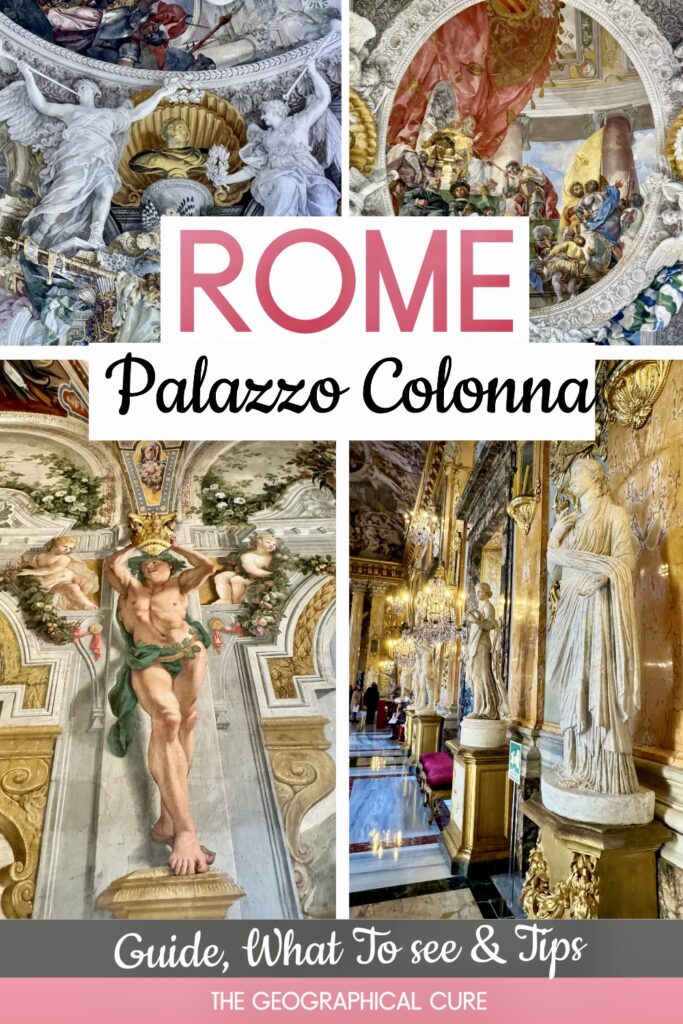
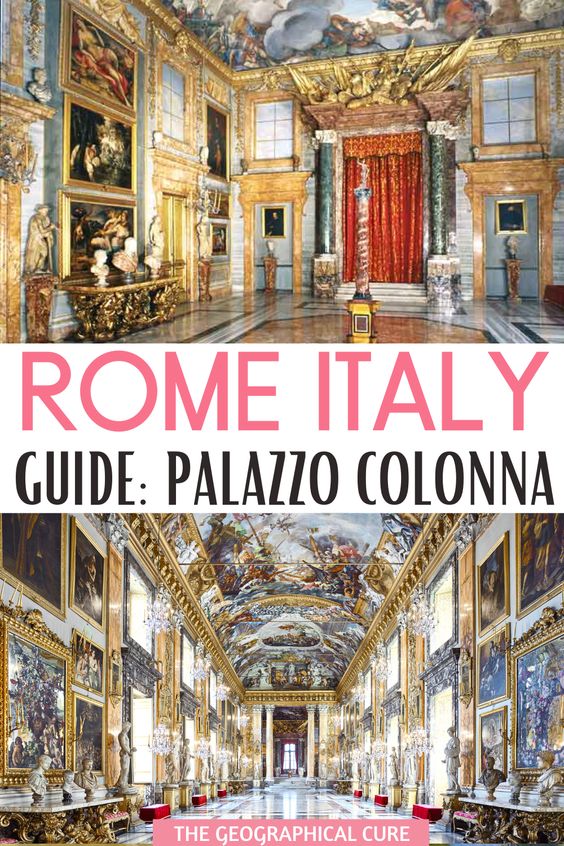
Hello Leslie
I have seen Yr photo before so probably means I have read yr blog.
We have been to Rome four times in two years and I see on yr blog a few places I want to include in my next visit so will make a note
I have been told I won’t be taken to Rome until I can walk properly. So I am exercising like mad. I sort of scuffed the surface of the brown ‘stuff’ on the Palatine Hill path going down the hill:I stepped aside so that people coming up could pass me. I smashed my kneecap completely. Slowly I’m getting there but my knee is so painful and the plastic only lasts so many years. Anyway I have got a few ideas what to do next time we come. I really would have chosen Rome to live instead of Valencia if only I had known. Could you tell me please whether i would contact a solicitor in Rome to sue the council )
Do you know whether anyone has sued anyone in Rome? ie would it be the council? It’s two years now and the op cost a lotta money. 30,000euros.Could you tell me who you think I should write to. As I came down the hill lots of people were coming up. It was busy the time we came to Rome two years ago since then
So sorry for the nasty injury! No, I don’t really have any advice for you in that regard. If it’s been two years, the statue of limitations may have run out
Wow! I just returned from Rome and was not aware of this place. At first, I thought it was the Doria. Thanks for sharing! So sad I missed this.
It’s a bit tricky to see since it’s only open on Saturday morning … Put it on your list for when you return! I saw quite a few new things on my last visit. There’s always something new to see in Rome.